IPF Bench Press Commands: Dominate Your Competition
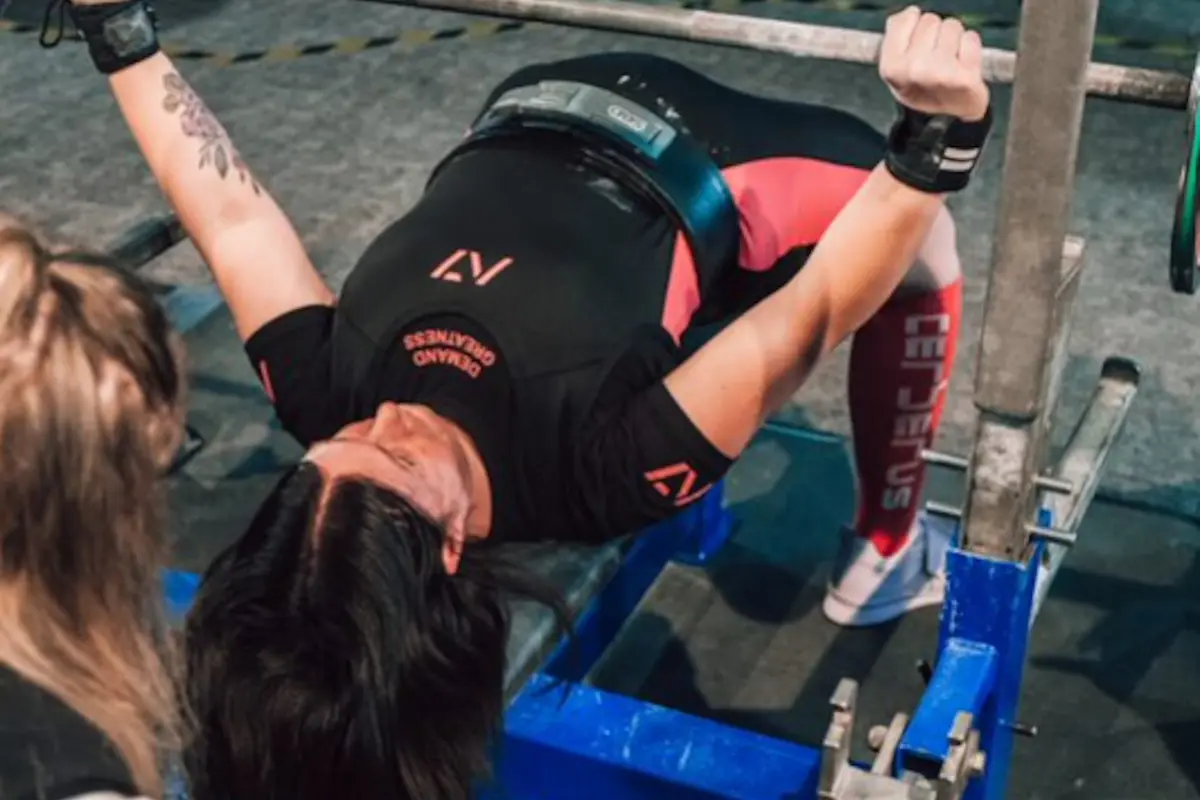
What's In This Article
- Key Highlights
- Introduction
- The Significance of Commands in Powerlifting
- The IPF
- Pre-Lift Preparation
- The 'Start' Command
- The 'Press' Command
- The 'Rack' Command at Lockout
- Common Misconceptions and Errors
- Training Tips for IPF Bench Press Commands
- Conclusion: IPF Bench Commands for Competitive Success
- Frequently Asked Questions
- Useful Links
Key Highlights
- The essential IPF bench commands are "Start," "Press," and "Rack," which guide the lifter through the different stages of the bench press lift.
- Following the IPF bench commands is crucial for a successful and fair lift, as deviating from the commands can result in a failed attempt.
- Proper pre-lift preparation, including body positioning and bar grip, is vital to be ready to execute the lift according to the IPF standards.
- The "Press" command is given only when the bar is completely motionless on the lifter's chest, testing their control and technique.
- Mastering the IPF bench commands requires disciplined practice, mental rehearsal, and working closely with coaches and spotters to ingrain the proper procedures.
Introduction
The International Powerlifting Federation (IPF) plays an important role in powerlifting. It is well-known for its strict rules and high standards. The IPF organizes powerlifting events across the globe. This helps to keep the sport fair and safe. Athletes can then showcase their strength and skills in a well-organized environment.
Following the referee's commands in powerlifting is crucial to avoid red lights, especially during the bench press. These commands guide the athlete through each lift stage, from taking the bar off the rack to completing the lift. Understanding and obeying these commands and watching for white lights are essential for a successful and safe lift, ensuring fair competition.
Boris Sheiko, a renowned powerlifting coach who took the Russian team to win 7 IPF world titles, emphasizes the importance of consistent practice, which includes adhering to competition rules and commands.
Knowing the bench press commands in competitions is essential. It is just as important as being strong and training hard. A lifter who does not follow these commands may lose their lift. This can happen no matter how strong or skilled they are. If you are competing in IPF events, understanding these commands is key.
The Significance of Commands in Powerlifting
- Commands help keep things fair and safe.
- They offer clear rules that all can understand.
- People know what to do and what to expect.
- Commands direct behavior and manages actions.
- This helps stop problems before they happen.
- A solid set of commands creates a safe space for everyone.
- Fairness comes from us all following these commands.
- When everyone listens, trust and safety grow.
- In this way, commands help make a better environment.
Commands are essential during a powerlifting meet. They ensure competitions are fair and safe. A head judge and skilled referees give these commands. These commands are clear instructions that all lifters must follow.
This standard practice helps create a fair environment. Here, every athlete faces the same rules and expectations. When lifters follow these commands, they show their strength and discipline. They also show they can do well under strict regulations.
Safety is essential for these commands. Powerlifting means lifting heavy weights, which can be risky if not done correctly. The commands help reduce these risks. In the bench press, the command to start the lift ensures the athlete is ready and in the correct position. This helps reduce the chances of injury. The command to put the weight back also provides the lift ends safely before placing the weight back on the rack.
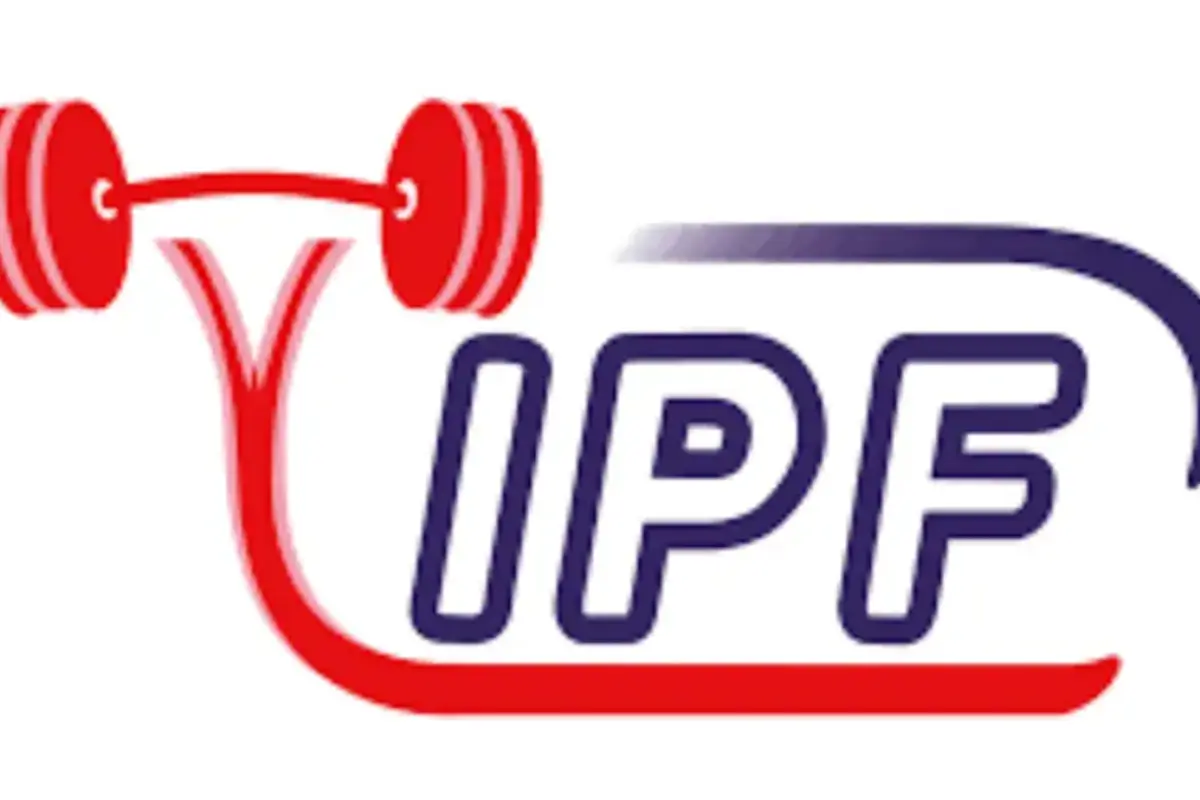
The IPF
When you think about powerlifting, you should know that each federation has different commands.
- The IPF, or International Powerlifting Federation, is one of the most well-known. Each federation has its own rules for how lifters can perform. This includes clear commands for starting and finishing lifts.
- Lifters must pay close attention to these IPF bench commands. They decide the order and timing for each lift, which is very important. It is vital to understand how commands vary among different powerlifting federations. Lifters must know the rules of the federation they are a part of.
- The concept of commands is similar in all powerlifting, including the deadlift, bench press and squat. However, the specific commands and when to use them can vary significantly among different federations such as IPF, USPA and WPC.
- This difference shows the range of rules and opinions of each group. Some federations may be easier about how the lifter should be positioned or when to give commands. In contrast, groups like the IPF stick to stringent rules and clear standards.
- The IPF has clear bench press rules for competitions. They focus on making sure all events are fair and safe. For example, lifters must pause the bar on their chest during the bench press. They can only press the bar when they get the signal.
- This rule sometimes differs in other federations, which might allow a shorter pause or different positions before pressing.
Pre-Lift Preparation
Preparation before the lift is key in powerlifting. Being prepared means being physically ready and following specific rules. Athletes should pay attention to their setup on the bench. This setup is the foundation for a good lift. It involves placing the body on the bench, holding the bar, and keeping the feet steady on the floor.
- The athlete lies back on the bench to get ready. They adjust their body so their eyes are directly below the bar. This helps them lift the weight smoothly and effectively.
- Their grip on the bar must follow ipf rules about width and style. Typically, lifters hold the bar within the rings, ensuring the same grips during all lifts and competitions.
- Foot placement matters, too. Lifters should keep their feet flat on the floor. This provides stability and support when they lift the weight.
The IPF has clear rules about an athlete's position before lifting.
- The lifter's head, shoulders, buttocks, and feet must touch the bench or floor during the lift.
- If there is any change in this position, the lift may fail. Staying in this position is very important. This shows that the IPF wants to keep competition fair and maintain the same standards.
- Once the bar is racked off, the lifter must stay entirely still before receiving the start command from the referee. This rule ensures the lift begins in a safe and steady position during commencement. It helps reduce the risk of injury and gives everyone a fair start.
- The lifter should hold the bar with their arms stretched out and wait for the referee’s signal to lower it.
This part of the competition requires strength, focus, and self-control. The lifter must know where their body is and control their movements. A good setup before the lift, aimed at achieving a personal record, includes skill, following the rules, and being mentally prepared. This helps the lifter have a safe and successful lift according to the IPF bench commands and strict rules.
The 'Start' Command
The 'Start' command in IPF powerlifting is key. It tells the lifter to begin the bench press lift. The rear referee, who also acts as the announcer, gives this command. When the referee says "Start," the lifter can lower the bar to their chest. Remember, the lift only begins after this is given.
The timing of the 'Start' command is critical. It should happen when the lifter has the bar out before them. Their elbows must be locked, and the bar should be above their chest. This moment shows the switch from getting ready to perform the lift. The lifter's focus changes from setting up to lifting the weight.
For the referee to say 'Start,' several things need to happen:
- The lifter must stay still on the bench.
- Their head, shoulders, buttocks, and feet should always touch the bench and the floor.
- The lifter should hold the bar according to the IPF's rules.
- The bar must stay steady over the chest.
- Elbows Locked: Keep your arms straight, and make sure your elbows are fully locked. This shows you are ready to start the lift.
The referee will stop the lift if the lifter does not follow these rules. The lifter must then adjust their position as necessary.
- Premature Movement: This occurs when you begin to lift or lower the bar before getting the signal. It is a common mistake, and it can quickly disqualify your lift.
- Poor Setup: Failing to find a stable position with good contact between your body and the bench or floor.
- Elbow Position: If your elbows are not completely straight, it can slow down or stop the start command. This means the lifter is not ready.
- If a lifter adjusts their grip or moves after the referee says they are ready, it might result in a no-start situation.
Athletes must practice discipline and control during this time. It's essential to know the rules of the 'Start' command. Following the IPF bench commands is crucial for a good lift and achieving the best performance in powerlifting competitions.
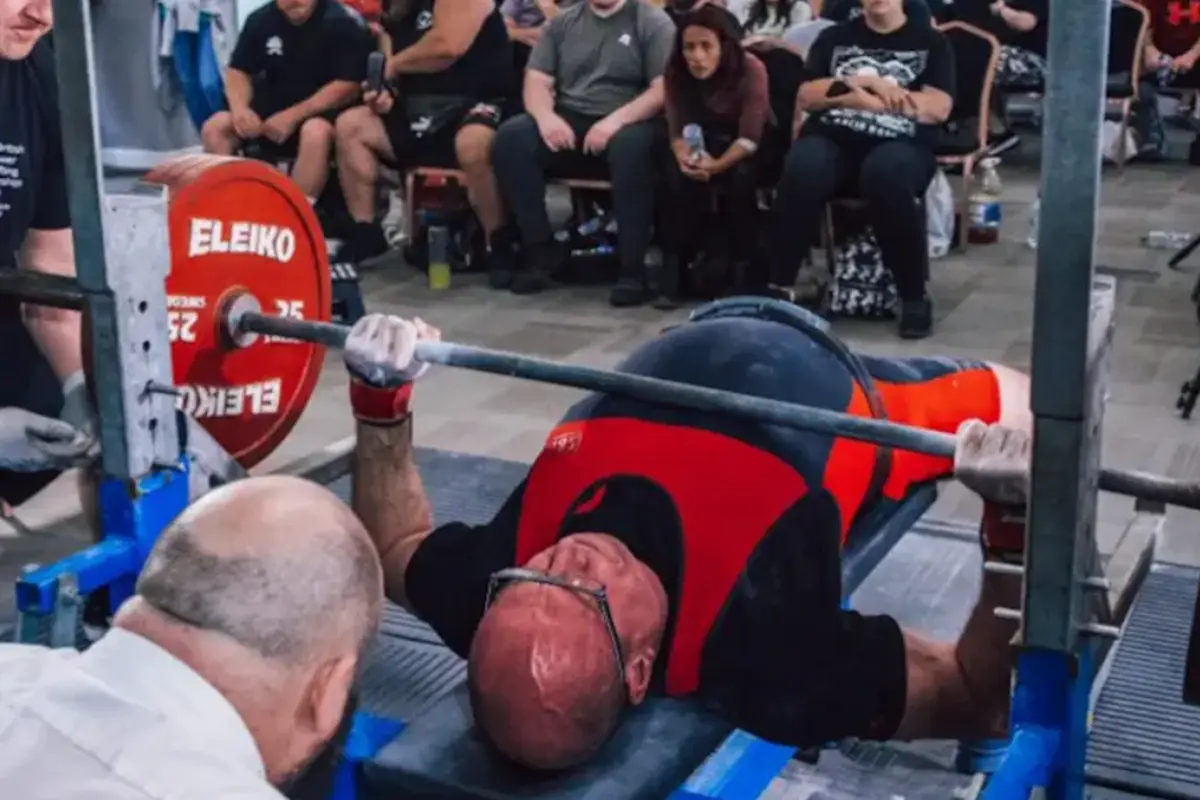
The 'Press' Command
The chief referee gives the 'Press' audible command when the barbell is on the chest. This IPF bench command is key because it tells the lifter to push the bar up until their arms are straight. Getting the timing and way it is given right is very important for a fair and successful lift.
- It's important to know that you should not use the 'Press' command until the bar comes to a complete stop. This means the bar must be totally still, which can also mean a second pause on your chest.
- This rule helps to avoid using momentum. It ensures the lift shows the real strength of the lifter. The referee checks the bar closely. The command is given only when the bar is completely still.
- When you hear 'Press', the lifter should move the bar up immediately. Waiting too long can waste energy and mess up the lift's rhythm.
- The lifter needs to push the bar straight up, steady and controlled. The bar must move along a straight line, and the lifter should avoid moving it sideways or changing its path.
- After finishing the press, the lifter must lock their elbows. This tells everyone that the lift is done. The bar should stay still until 'Rack' is said.
By learning and practicing the 'Press' command, lifters can improve their performance in IPF competitions. This is a standard step and crucial for the competition bench press. It tests the athlete's control, strength, and technique.
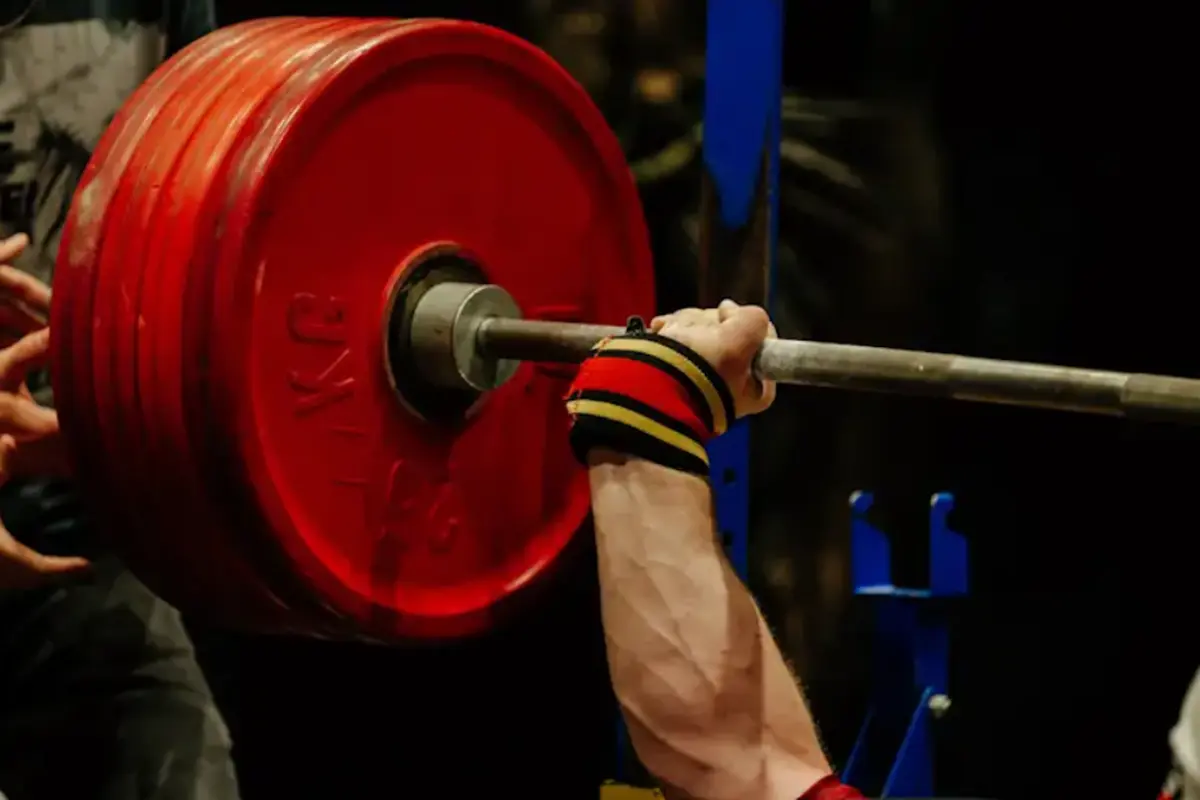
The 'Rack' Command at Lockout
The 'Rack' command in IPF powerlifting is the last in a bench press attempt. This command means that the lifter has finished the lift and completed the rep.
After the command, the lifter can safely put the bar back on the rack. Lifters must know that the lift is not done until the referee gives this command. The 'Rack' command is crucial for showing the completion of the lift. It helps to keep both the lifter and the spotters safe.
Here’s how to complete the lift correctly:
- The lifter needs to hold the bar steady when their arms are fully extended throughout the range of motion. If there is any shaking or they lose control, the lift isn’t finished yet.
- The lifter must stay in this locked position and not rack the bar.
- This should continue until the referee gives the 'Rack' command.
- After the 'Rack' command, the lifter should slowly and carefully put the bar back in the rack. This process should be done with control. Usually, spotters assist the lifters in racking the bar to ensure safety for everyone.
Failing to wait for the 'Rack' command can lead to the lift being disqualified. If the lifter does not keep control of the bar or lets it drop too fast to the rack before getting the command, the lift could fail.
Common Misconceptions and Errors
Misunderstandings and mistakes about IPF bench commands can hurt a lifter's competition performance. Athletes need to recognize and correct these common errors if they want to perform well.
- A common mistake is starting the bench press before the 'Start' command is given. Many lifters believe this command means to get ready, but in reality, it signals the start of the lift.
- Some lifters think a slight pause with the bar on their chest is okay. However, the IPF states that the bar needs to be entirely still before they give the 'Press' command.
- The 'Rack' command can be confusing. Lifting enthusiasts may feel the lift is done once they finish. But the lift only ends when they hear the 'Rack' command. If they stop and rack the bar too early, it can cause a failed lift.
- There is sometimes an idea that it is all right for your feet to move a bit when you lift. However, the IPF says your feet must stay flat and not move during the lift.
How to Avoid Disqualification Due to Command Errors
- Lifters can use different ways to avoid being disqualified for making command mistakes.
- Understand the rules well.
- Read the IPF's rulebook.
- It is essential to know the rules for each command.
- Use commands when you practice.
- Add them to your training schedule.
- Work together with a coach or partner.
- They can give commands during practice.
- This will help you feel like you are in a real competition.
Mental practice is about imagining the entire lifting process. You should follow the instructions closely. When you practice in your mind, it can help you respond quicker and make fewer errors.
- Focus on discipline. Discipline is vital in training.
- Practice holding the starting position.
- Work on the pause on the chest.
- Practice the lockout at the top.
- Keep doing this until you hear the commands.
- Attend IPF events as a viewer or a contestant.
- Pick categories with less pressure to get comfortable with the competition.
- This approach will help you feel relaxed in the event and manage your speed.
- Use video feedback while training to check your lifts.
- Look at whether you are following the commands correctly.
- Make changes if you need to.
Avoiding disqualification in IPF competitions is about being accurate and in control when listening to commands. Lifters can do better by understanding common mistakes and trying to avoid them.
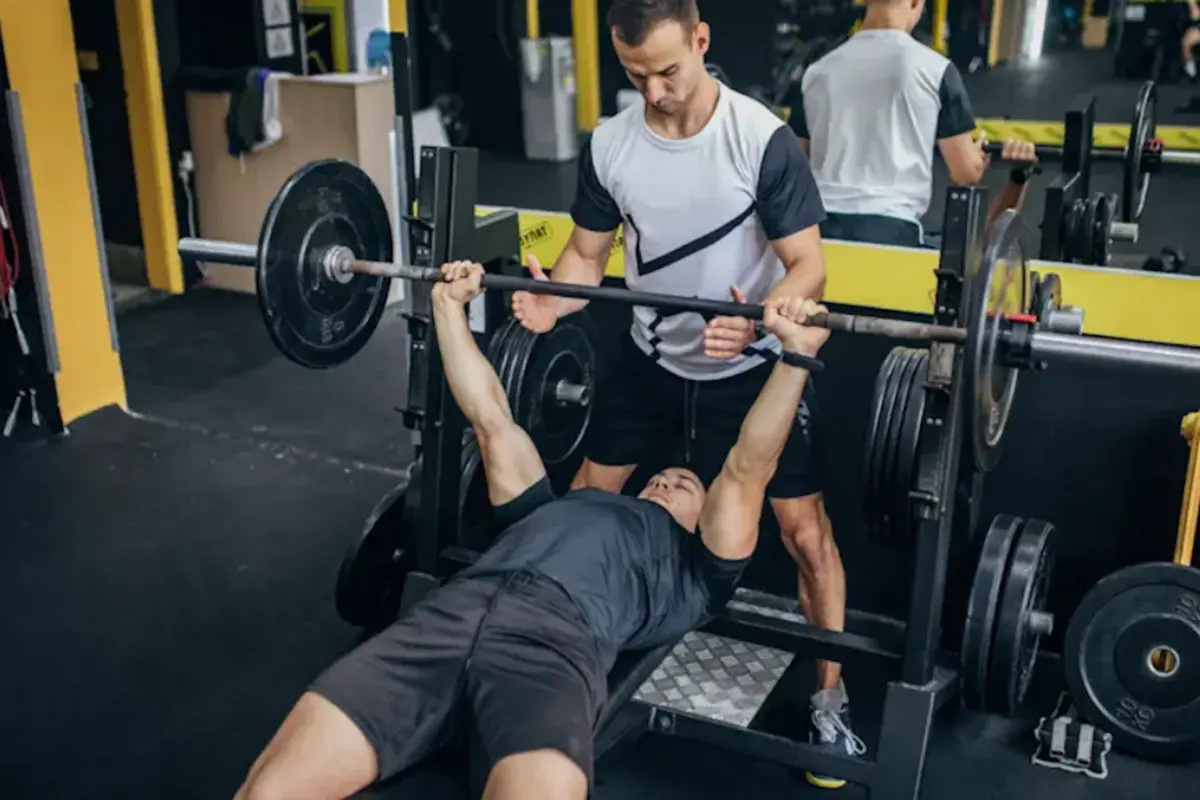
Training Tips for IPF Bench Press Commands
Mastering the IPF bench commands requires practice and focus. It's recommended to practice these commands every bench day in prep. This will help you do well in competitions. Here are some helpful tips for you:
- Practice Competition Conditions: Train in a way that feels like a real competition. Follow every command just as you would in a competition. This helps your body learn the moves and feel at ease with the commands.
- Use audio recordings.
- Record the commands if you don't have a coach or training partner.
- Then, play those recordings during your training sessions.
- This way, you can practice the timing and rhythm of the commands.
- While you practice bench press training, rest the bar on your chest until someone tells you to press.
- This gets you ready for the 'Press' command.
- It also teaches you how to keep the bar steady.
- Practice Discipline: It's imperative to have discipline in command training.
- Don't skip any steps.
- Don't rush through the commands when you practice.
- Mental Rehearsal: Try to make it a habit to imagine the whole lift and the commands. Practicing in your mind is a great way to improve your reaction to commands when you lift.
The Role of Coaches and Spotters in Helping Athletes Master IPF Commands
Coaches and spotters are essential for athletes to understand IPF bench commands.
Coaches can provide fast feedback during practice. They can show you if you follow commands correctly and point out mistakes you may not see, like timing.
- Coaches and spotters can help practice feel like an actual comp.
- They can achieve this by giving instructions.
- They will also watch how lifters practice their skills.
- Safety is essential, just like in an actual competition.
- Coaches can help you improve your lifting according to IPF standards. They will pay attention to the bar's path, your grip, and how you position your body.
- Motivation and Support: Help from coaches and spotters is significant. This is especially true during challenging training periods or when you are learning to follow strict rules.
- Regular practice with a coach or helpers helps you train often.
- They ensure you follow the commands correctly.
- This is very important for success in competitions.
Conclusion: IPF Bench Commands for Competitive Success
The bench press in powerlifting includes several essential steps. It begins with the pre-lift preparations. After that, lifters pay attention to key moments that involve the commands 'Start', 'Press', and 'Rack'.
These IPF bench commands ensure safe and fair lifts. Many lifters make mistakes due to lifting myths. Each command guides lifters on proper execution, which is crucial for success in powerlifting through disciplined practice.
Regular practice will help you improve. Listen to the feedback from your coaches and spotters. Each training session is a chance to improve your technique and follow the IPF bench commands more effectively.
One of the biggest differences in doing well in IPF powerlifting competitions is practice, discipline, and respect for the rules. It's important to realize that learning to follow commands is a big part of becoming a better powerlifter. As you train and compete, make sure you work as hard on following commands as you do on lifting weights.
In conclusion, remember that real competition is not just about physical strength. It is also about showing your skills and following the best rules of the sport. Let these rules help you do your best and respect the traditions of powerlifting set by the IPF.
Frequently Asked Questions
What happens if I don't wait for the IPF bench commands in a competition?
Failure to wait for or follow the Start, Press, or Rack commands will disqualify the lift. It's crucial to listen carefully and respond to each one to ensure your lift counts.
When is the "Press" command given?
The "Press" command is given when the bar on the lifter's chest is completely motionless. If the bar is still moving or bouncing, the referee will not give the signal, and failure to wait will lead to a failed attempt.
Can I lift my butt off the bench during the press in an IPF competition?
No, lifting your butt off the bench will result in a failed attempt. The lifter’s buttocks, shoulders, and head must remain in contact with the bench throughout the entire lift.
What causes a lifter to miss the "Rack" command in an IPF competition?
The "Rack" command is only given when the bar has been fully pressed with arms locked. If the lifter's arms are not wholly extended or they try to re-rack the bar before the command is given, the lift will be invalid.